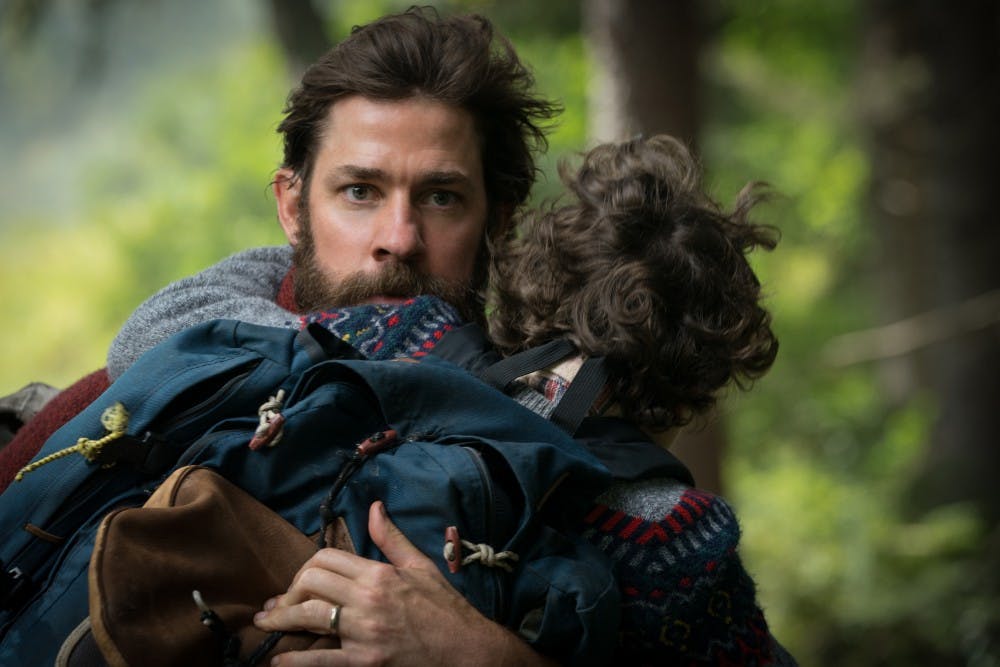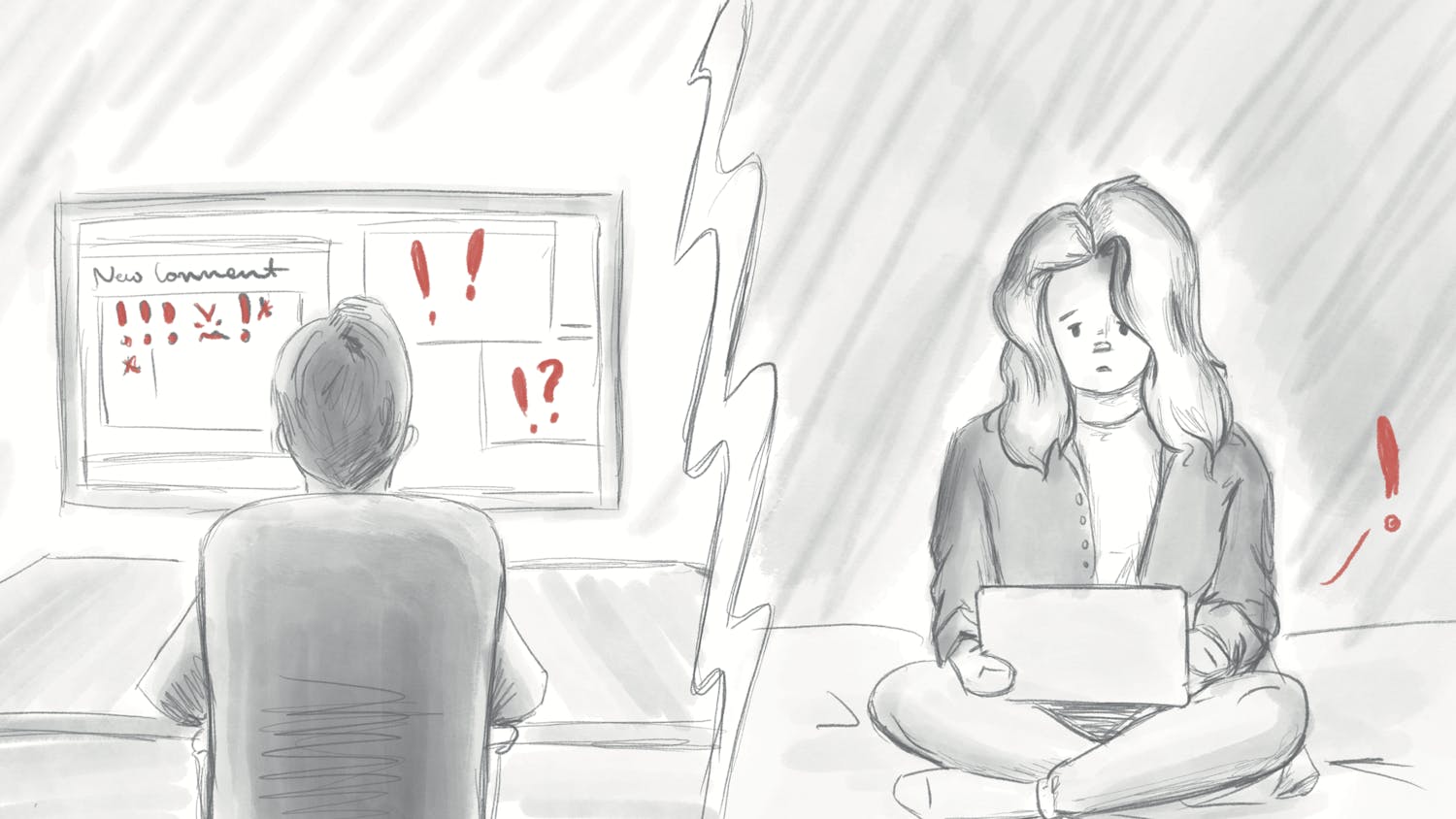When I interviewed John Krasinski recently about his new horror thriller, “A Quiet Place,” he said he was too much of a scaredy-cat for horror movies. Oddly enough, that simple fact shows throughout every ferociously tense second of his new film.
On its surface, “A Quiet Place” looks and feels like a magnificent work of pure, high-concept dread. It follows a small family as they fight for survival in a newly apocalyptic world, hiding from nightmarish creatures that hunt by sound. The trailers sold only the ingenuity of that premise; nothing more, nothing less.
But to read “A Quiet Place” only as a masterwork of conception and dread feels reductive. What Krasinski has achieved with this remarkable gem of a film is of much greater magnitude, and it’s clear much of its brilliance derives from his willingness to approach the film as a horror rooted firmly in the emotional stakes of a poignant drama.
Make no mistake, “A Quiet Place” is without a doubt one of the most singularly terrifying films in recent memory, a dread-soaked concoction of unbridled terror and frenetically intense nightmare fodder. It kept me at the edge of my seat for nearly its entire run-time.
But more importantly — especially considering the current landscape of increasingly derivative horror cinema — what makes it so special is that Krasinski deftly undercuts the movie’s horror with tenderness and empathy. He takes his time establishing setting and developing characters. Long sequences elapse in quiet, sensitive silence merely to wallow in the stirring beauty of a world without people and without sound.
We’re introduced not only to the characters, but to the zen of their lifestyle. And because Krasinski devotes such care to familiarizing the viewer with the protagonists, the movie’s stakes feel more intimate and more grave. In “A Quiet Place,” emotion begets horror, and horror magnifies emotion.
As a result, the slew of standout scares the film produces from its exceptional premise are incredibly, palpably affecting. Occasionally, its set-pieces feel contrived or unnecessary, and occasionally it strays too far into B-movie kitschiness. But because self-proclaimed fraidy-cat Krasinski recognizes the vitality and magnitude of emotion, and because he anchors every facet of his movie to its radiant emotional core, it always feels effective.
There’s a particular sequence toward the end of the film’s first act that feels unnecessary, and as a result it’s mostly devoid of satisfying scares. Mostly, it’s just forgettable beyond a nicely executed jump scare or two, but it’s also evident of what feels like an unfortunate desire to make the film palatable to mainstream audiences.
A number of scenes invoke a soothing serenity one does not expect to find in a horror movie. Naturally, they’re beautifully evocative in their difference, resplendent in how they complement the intensity that crackles beneath the film’s surface. A scare feels warranted, even perhaps necessary, at this point, but the sequence comes across as forced, as if the screenwriters don’t trust audiences to be patient.
It feels like too shallow a sequence for what essentially amounts to a masterfully crafted horror twist on an arthouse B-movie premise — think “It Follows” or “It Comes at Night” — made readily accessible for mainstream audiences through the deftness of Krasinski’s filmmaking.
Sound is, of course, vital to the movie’s effectiveness. With its singular brand of viscerally intense auditory horror, “A Quiet Place” has stumbled upon a new trove of horror movie gold. It’s a familiar genre facet spun into the brilliant crux of a brilliant film.
Entire set-pieces elapse in dead silence. The theater, one presumes, is silent enough to hear a pin drop. In the absence of sound, dread seeps in like a rush of freshly spilled blood. At times, it’s overwhelming. It’s always invigorating.
Krasinski’s use of sound as an integral part of the film's conceit and identity is wonderfully evocative. It’s a perfect tool to ratchet up the tension of the movie. By tinkering and experimenting with sound design throughout the latter half of the film, Krasinski creates one of the most frenetically, chaotically intense films in recent memory.
The clearest comparison may be George Miller’s visceral action extravaganza, “Mad Max: Fury Road,” to which “A Quiet Place” feels at times like a spiritual successor.
And though occasionally it can falter, “A Quiet Place” is both stirringly thoughtful and remarkably entertaining. It feels in a lot of ways like the perfect horror movie — a brilliant concept worked into a stunningly intense film, and a horror flick with heart, no less.
It’s a horror-tinged adrenaline syringe to the heart. A shock of terror-soaked, emotion-fueled horror filmmaking that will leave the genre indelibly changed.




